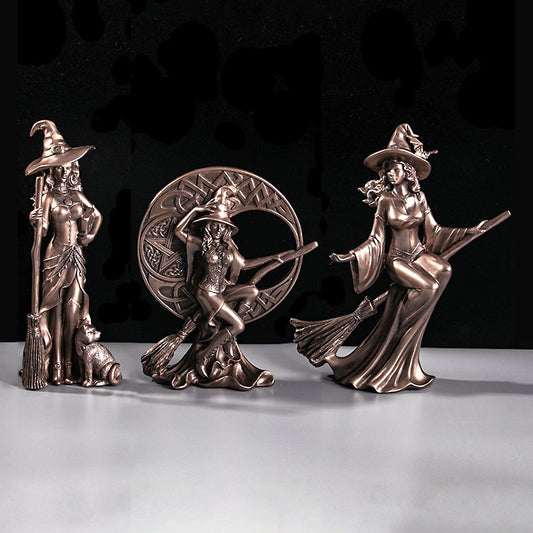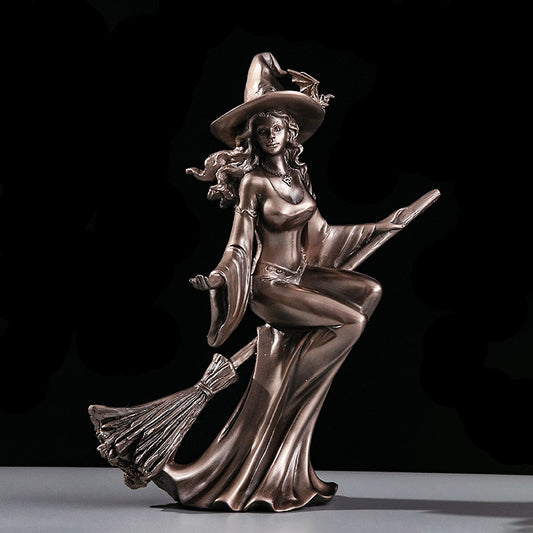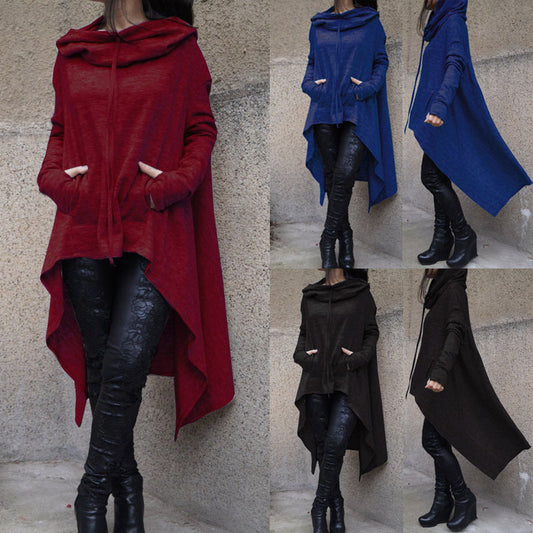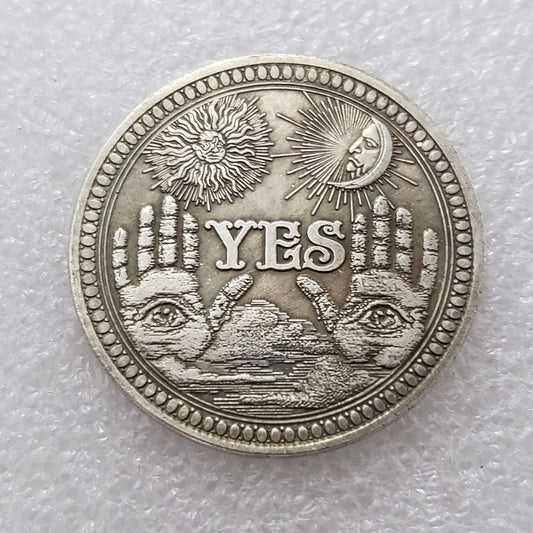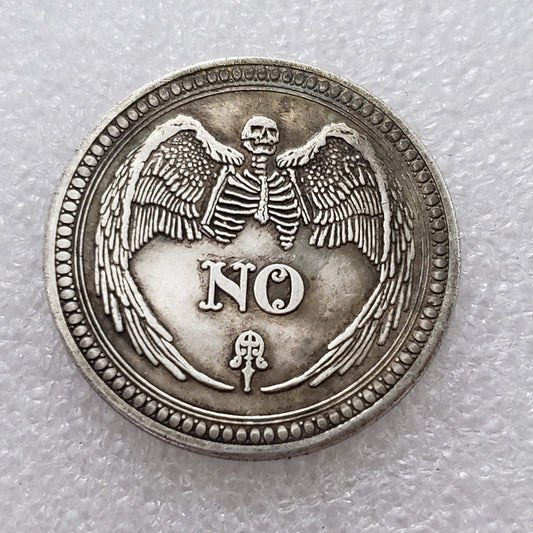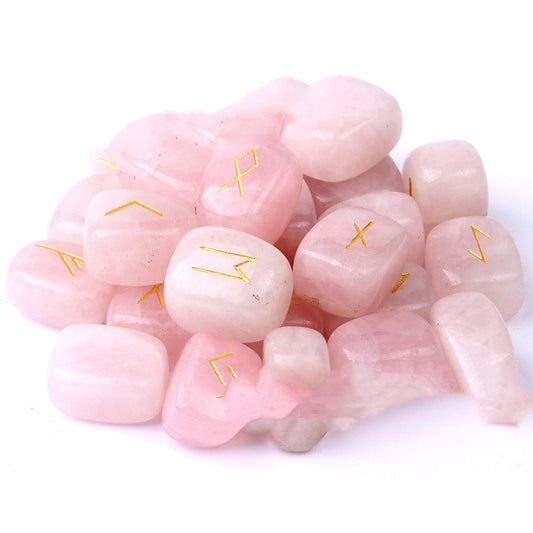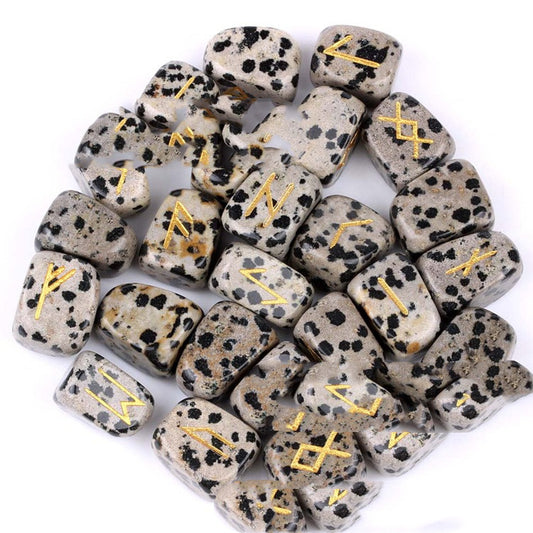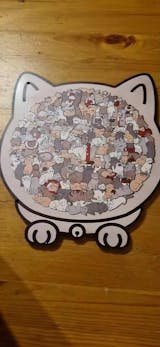Introduction: Honoring the Sacred Turn of the Seasons
In Wiccan tradition, time is not a straight line—it is a sacred circle, ever-turning, ever-renewing. This living rhythm is known as the Wheel of the Year, a spiritual map that guides practitioners through the natural cycle of life, death, and rebirth. Rooted in ancient Earth-based traditions, the wheel turns through eight holy days known as the Sabbats, each one a reflection of the changing seasons and the energies they bring.
To follow the wheel year is to return to the heart of nature. As the sun waxes and wanes, as the soil sleeps and then awakens, so too do we experience growth, reflection, celebration, and release. The Sabbats mark these turning points—not just in the outer world, but within our inner landscape as well.
For modern Wiccans, especially those seeking deeper alignment in a fast-paced world, the Wheel of the Year offers more than just a spiritual calendar. It is a reminder to slow down, to listen, and to live in harmony with the sacred cycles that govern all life. Whether lighting a candle at Samhain or dancing around a maypole at Beltane, each observance is a step on the spiral path of transformation.
The wheel turns for all, but those who walk with it move in rhythm with the Earth, the Moon, and the Mystery. It is a journey of presence, of reverence, and of returning—again and again—to what is most real.
What is the Wheel of the Year?
The Wheel of the Year is a spiritual framework followed by Wiccans and many modern Pagans to honor the changing seasons and Earth’s sacred cycles. It divides the year into eight major festivals known as the sabbats, each representing a pivotal point in the cycle of life, death, and renewal. These celebrations are deeply rooted in ancient agricultural traditions and pre-Christian European customs, where communities marked seasonal shifts with rituals, feasts, and offerings to the divine.
At its heart, the wheel reflects a cyclical view of time—unlike the linear calendar used in modern life. For Wiccans, time flows like a spiral, where endings are also beginnings, and every turn of the wheel year brings an opportunity for spiritual reflection, growth, and rebirth. Each sabbat serves as a touchstone along this spiral, mirroring the natural transitions in the Earth’s energy—from the stillness of winter to the fertility of spring, the abundance of summer, and the release of autumn.
The sabbats are often divided into two categories: the Greater Sabbats—Imbolc, Beltane, Lughnasadh, and Samhain—and the Lesser Sabbats, which align with the solstices and equinoxes—Yule, Ostara, Litha, and Mabon. Together, they create a balanced pattern of light and shadow, activity and rest, action and reflection.
The Wheel of the Year is more than a collection of seasonal holidays. It is a sacred guide for living in harmony with the land, the cosmos, and the self. It invites practitioners to align with the Earth's rhythms, fostering mindfulness, gratitude, and a deeper connection to the divine forces that shape our world. In turning with the wheel, we come home to the ancient wisdom woven through all of life.
The Eight Sabbats: Sacred Festivals of Light and Shadow
The Wheel of the Year is anchored by the eight sabbats, each marking a sacred turning point in the Earth’s cycle. These festivals—some rooted in Celtic and Norse traditions, others tied to solar alignments—serve as both spiritual milestones and moments of deep reflection for Wiccans. As the wheel year turns, each sabbat invites practitioners to honor seasonal energies, work magick, and align with the rhythms of nature.
Samhain – The Witches’ New Year
Date: October 31 – November 1 Season: Late Autumn
Samhain (pronounced sow-in) marks the end of the harvest and the beginning of the dark half of the year. Often considered the most important of the sabbats, Samhain is the Wiccan New Year, a time when the wheel turns toward death, introspection, and ancestral remembrance.
Spiritually, it is a time to honor those who have passed, to reflect on the year’s lessons, and to prepare for spiritual rebirth. The veil between worlds is believed to be at its thinnest, making it a potent time for divination, spirit communication, and shadow work.
Traditional customs include lighting candles for ancestors, setting a place at the table for the dead, and performing protective rituals. Common symbols are pumpkins, apples, bones, and cauldrons. Colors associated with Samhain include black, orange, and deep red. Deities often honored include the Crone aspect of the Goddess and death-related gods like Hades or Anubis.
Modern celebrations might involve creating an ancestor altar, hosting a silent supper, or performing tarot readings. Whether in solitude or with a coven, Samhain is a sacred pause on the wheel year, urging us to listen inward and embrace the mystery of transformation.
Living the Wheel: Integrating the Sabbats into Daily Practice
Walking in rhythm with the Wheel of the Year doesn’t require elaborate rituals or constant observance—it’s about embracing the natural flow of energy and aligning your life with it in meaningful ways. The wheel becomes more than a calendar; it becomes a spiritual guide, offering insight and direction through every phase of the year.
Each of the eight sabbats brings unique lessons and opportunities for growth. Samhain asks us to release, Yule invites rest, Ostara awakens creation, and Litha energizes action. By tuning into these energies, Wiccans cultivate mindfulness, self-awareness, and spiritual resilience across the wheel year.
A powerful way to integrate the sabbats into your daily life is through altar work. Change the items on your altar to reflect the current season—using flowers in spring, harvest symbols in autumn, or candles and evergreens in winter. Crystals, herbs, and symbols related to each sabbat help anchor your space in the energy of the moment.
Journaling is another gentle practice that brings the wheel inward. Reflect on what each sabbat means to you: What are you releasing? What are you calling in? How do your personal cycles mirror the Earth’s? Regular entries can become a sacred conversation with yourself and the seasons.
Even the mundane can be magickal. Decorate your home with seasonal touches, cook meals with traditional sabbat ingredients, or light a candle with intention each morning. In the workplace, align your goals or planning cycles with the broader themes of the wheel—rest during waning times, push forward during waxing ones.
Above all, let your practice evolve without pressure. Living the wheel year isn’t about perfection—it’s about presence. Whether you honor each sabbat with a ritual or a single mindful breath, you are still in sacred alignment. The more we weave these ancient rhythms into our modern lives, the more rooted, balanced, and spiritually nourished we become.
The Wheel as a Path of Inner Transformation
Beyond seasonal celebration, the Wheel of the Year is a mirror for the soul—a map for personal evolution that deepens as one walks the Wiccan path. For mature practitioners, the turning of the wheel is not only an external observance but an inner journey through light and shadow, growth and stillness, life and death.
Each of the eight sabbats invites an opportunity for transformation. Samhain calls us inward to face the parts of ourselves we’ve outgrown. Imbolc sparks renewal and clarity. Beltane fuels passion and creation. As the wheel year unfolds, we are continuously offered the chance to shed layers, awaken truths, and return to wholeness.
The wheel provides a sacred structure for shadow work and self-reflection. During the darker sabbats, we may be called to confront fears, grief, or limiting beliefs. In the lighter half of the year, the focus may shift toward manifestation, healing, and expansion. These cycles echo our own rhythms of contraction and release, making the sabbats potent portals for intentional inner work.
For Wiccans in their 30s and beyond—those who’ve cycled through seasons of life—the wheel becomes even more profound. Rituals grow deeper, insights become richer, and each sabbat becomes a checkpoint in a long, sacred pilgrimage toward spiritual mastery.
By attuning to the wheel year, practitioners open themselves to a life of conscious growth. It is not a race, but a spiral—a journey walked step by step, sabbats after sabbats, until the sacred rhythms of Earth are reflected fully in the heart.
Q&A: Understanding the Wheel of the Year
Q: What is the Wheel of the Year? A: The Wheel of the Year is a sacred calendar used in Wiccan and many Pagan traditions to honor the natural rhythms of the Earth. It is made up of eight seasonal festivals known as sabbats, each marking a key point in the solar cycle. These celebrations are more than holidays—they are spiritual gateways for connecting with nature, the divine, and one’s inner self. The wheel turns continuously, reminding practitioners of life’s cyclical nature and the deep wisdom found in observing the seasons.
Q: How to celebrate the Wheel of the Year? A: Celebrating the wheel year can be as simple or as elaborate as you choose. Many Wiccans honor the sabbats through rituals, meditations, feasts, and symbolic acts that reflect the energy of the season. You might light candles during Yule to welcome the return of the sun, plant seeds during Ostara as a symbol of new beginnings, or perform a fire ritual during Beltane to ignite passion and joy. Altars are often updated with seasonal colors, herbs, and symbols, and solitary practitioners may choose journaling or tarot as part of their celebration. What matters most is intention—living in conscious rhythm with the wheel.
Q: How to read Wheel of the Year tarot cards? A: Reading tarot in alignment with the Wheel of the Year involves drawing insight from seasonal energies and sabbat themes. For example, during Samhain, cards related to endings, transformation, and ancestral messages may hold deeper meaning. During Litha, focus might shift to abundance, personal power, and illumination. Many Wiccans use tarot spreads themed around the sabbats, asking questions like: What must I release this season? or What energy is blossoming in my life now? By weaving the tarot with the wheel, practitioners gain a more nuanced and timely spiritual perspective.
Q: When does the Wheel of the Year start? A: While the wheel has no rigid starting point, many Wiccans recognize Samhain (October 31) as the spiritual new year. Samhain marks the final harvest and the descent into the darker half of the year, making it an appropriate time for endings, introspection, and the setting of new spiritual intentions. Others may feel called to begin the wheel year at Yule, the winter solstice, when the sun is reborn. Because Wicca is a nature-based path, there is room for personal resonance—what matters is honoring the cycle, wherever you choose to begin.
Q: Is the Wheel of the Year Pagan or Wiccan? A: The Wheel of the Year is both Pagan and Wiccan. It originates from ancient European pagan agricultural and solar festivals, particularly Celtic traditions. Wicca, a modern Pagan religion founded in the mid-20th century, adopted and refined this system into the eight-fold sabbats most practitioners follow today. While all Wiccans observe the wheel year, not all Pagans do so in the same way. Some paths may only celebrate certain festivals, while others add cultural or regional variations. Regardless of label, the wheel remains a powerful spiritual framework for connecting with Earth, Spirit, and self.
Summary: Reclaiming the Rhythms of the Earth
In a world that often pulls us away from nature, the Wheel of the Year offers a sacred return—a path back to the Earth, the Self, and the divine cycles that govern all life. By attuning to the eight sabbats, we reclaim the wisdom of seasonal living and begin to walk in harmony with the energies that shape the world around us.
The wheel is more than a spiritual calendar; it is a timeless compass guiding Wiccans through the light and shadow of the year. Each turn invites reflection, celebration, release, and rebirth—reminding us that transformation is not a destination, but a continuous journey.
As the wheel year turns, we are offered constant opportunities to slow down, listen deeply, and live with intention. Whether through ritual, quiet meditation, or mindful connection with nature, honoring the sabbats is a powerful way to ground yourself in spiritual truth.
Let the wheel be your guide—not only through the seasons of the Earth, but through the sacred seasons of your soul.


